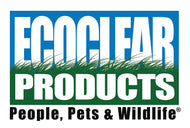COVID-19, the current global health concern that has affected over 23 million people in nearly all countries. While we wait for a valid antiviral treatment and effective vaccine, there is only one thing we can do, prevent. A major part of this prevention is cleaning; this includes cleaning ourselves and surfaces. While there are a substantial number of cleaning products available, some are better than others. What are these? Let’s find out.
COVID-19, the now infamous pandemic affecting over 23 million people worldwide, has become part of our normal daily lives. This respiratory disaster is incredibly cunning, surviving on inanimate surfaces for up to 9 days (1). This ability to remain viable for such a long time is one reason why we are struggling to keep it under control.
While we wait for an effective antiviral drug and approved vaccine, there is only one thing we can do, prevent, prevent, and more preventing (2). Valid preventative measures include social distancing, personal protective equipment, and of course, lots and lots of cleaning (3). Happily, although it may seem like containing COVID-19 is an impossible task, there are a number of ways we can clean ourselves healthy.
What Is COVID-19, and Why Is it So Contagious?

It is best to start with some high school biology. SARS-Cov-2, the virus responsible for the disease we know as COVID-19, is what is referred to as an envelope, positive-sense, single-stranded RNA virus. Now, if that goes well over your head, don’t worry; think of it as small blobs of coding strands that can integrate themselves into our cells (4).
These blobs are well-known for remaining on biological surfaces, such as our hands and environmental surfaces, such as those door handles at work (5). The length of time they are able to stay on these surfaces can range anywhere from one day to nine days (6). Because of this, it has been mentioned time and time again to clean all surfaces, wash our hands, and not touch our faces (7). But that leaves most with one burning question, what do we clean with?
How to Clean SARS-CoV-2 (COVID-19) Droplets?

If you walk around the supermarket today, there will be an overwhelming number of cleaning products to choose from, and it can be incredibly difficult to know which one is better than others. This is where organizations such as the Environmental Protection Authority (EPA) come in. In response to the COVID-19 pandemic, the EPA has compiled a “go-to” list of cleaning products suitable for inactivating SARS-CoV-2 droplets or “blobs”, this is referred to as “List N” (8).
Essentially, there are a number of products fit for the job of cleaning up those pesky blobs, but there are some better than others (9). In general, compounds like hydrogen peroxide, alcohol, bleach, and peracetic acid are able to inactivate SARS-CoV-2 from 2 to 20 minutes (10). However, there are disadvantages for some of these products, including toxicity, flammability, impracticability (products, like bleach, can stain clothing), and so on. It is important to select products that are right for you and help protect you against SARS-CoV-2 and therefore, COVID-19.
Cleaning Products Effective for SARS-CoV-2 (COVID-19)
One product winning at the race of disarming COVID-19 and having minimal impacts on ourselves and those around us is SteriCide™. This product contains two of our superstar ingredients, Peracetic Acid and Hydrogen Peroxide.


Hydrogen Peroxide
Hydrogen Peroxide, enlisted in the battle against germs since the dawn of time, has been boasted as one of the key players in the fight against COVID-19 (11). At a concentration of 6.14% in SteriCide™, the time required on a surface to inactivate our sneaky “blobs” is only 1 minute (12). You may have heard of Hydrogen Peroxide before; this product has been long used in some bleach mixtures. Unlike typical bleach, which is comprised of Sodium Hypochlorite, Hydrogen Peroxide does not stain. You will be able to remove SARS-CoV-2 without having to remove your clothes to throw in the bin with it.
Peracetic Acid
Peracetic Acid, unlike Hydrogen Peroxide, is a compound you probably have not heard of. This underdog in the “surface cleaning” world acts as a broad-spectrum antimicrobial (13). It has significant power in destroying bacteria, fungi, and viruses, including SARS-CoV-2 (COVID-19) (14). As a result of its impeccable antimicrobial powers, it has actually been used as a disinfectant in wastewater for a number of years (15). In addition, it has a short contact time to kill microbes, and can work in a number of environments, including surfaces (16).
In addition, studies have validated the cleaning power of Peracetic Acid in hospitals. When using this disinfectant in hospitals in China, no COVID-19 transmission occurred (17). This supports Peracetic Acid’s role in fighting the spread of SARS-CoV-2 (COVID-19) in even the most challenging of settings.
These two “winners” in the COVID-19 cleaning world have substantial advantages compared to other products, including being very safe. Other compounds that are equally effective, such as alcohol (>70%) and sodium hypochlorite (typical bleach), have major disadvantages, such as being toxic, flammable, and damaging to ourselves and our clothes (18).
The Bottom Line
In the current COVID-19 world, even with the lack of effective treatment, there is one major thing we are able to do to help stop it in its tracks, cleaning. While there are a huge number of cleaning products available, the EPA has narrowed this list down.
There are a number of advantages and disadvantages to the key ingredients in these products. However, a winner is creeping out ahead of the pack, that being EcoClear’s SteriCide™. With high fighting power and being remarkably safe, this is a product worth using to fight germs.



